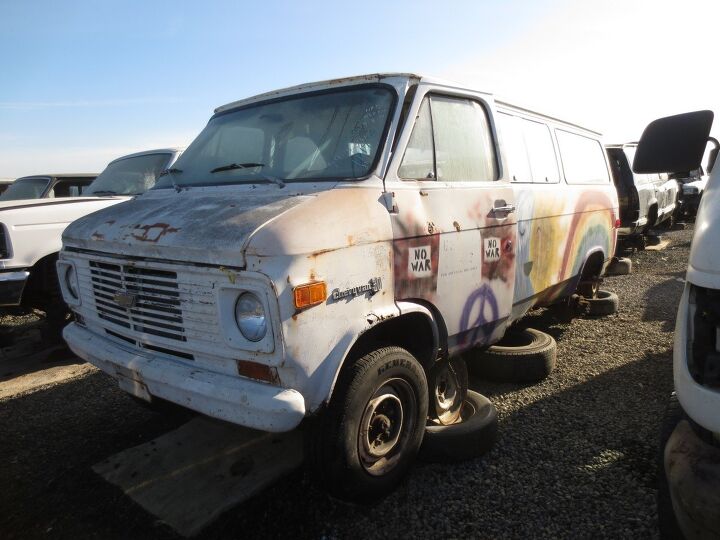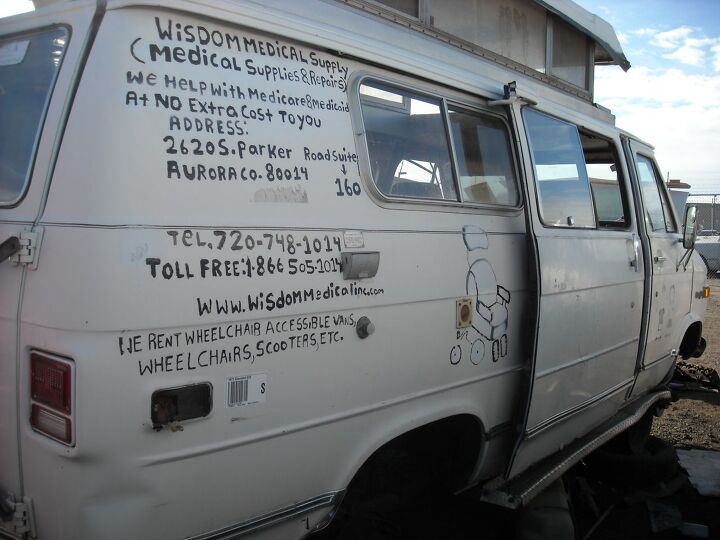#ChevroletVan
Junkyard Find: 1969 Chevrolet ChevyVan 108
For most of the 1960s, the forward-control, mid-engined small van, with the driver sitting atop the front axle and crowded against the door by an engine-containing box known as the “doghouse,” was quite popular in the United States. These things were bouncy, ill-handling, dangerous steel boxes, but they could haul absurd loads with their 1904-technology solid axles and leaf springs all the way around and were easy to maneuver in tight spaces.
Nearly all these vans were used up or crashed decades ago, but xillion-mile survivors still trickle into wrecking yards to this day. Here’s a rare long-wheelbase late-’60s ChevyVan that I spotted in Denver last week.
Junkyard Find: 1973 Chevrolet G30 Hippie Van
You see fairly modern minivans covered with lefty bumper stickers all over the place, but those aren’t proper hippie vans. Given their value these days, a Volkswagen Type 1 Transporter isn’t a proper hippie van, either, because you can’t be a genuine hippie in the 21st century unless you’ve burned all your bridges to The Man’s unjust world and you have no Plan B of getting a so-called real job on the Downpressor Man‘s plantations. A real hippie van is a big, ugly, cheap steel box on wheels, with crude stencils and hand-painted messages on the outside and room inside for a dozen unwashed radicals who know that unless you’re free, The Machine must be prevented from working at all.
Today’s Junkyard Find is such a van.
Healthcare Shop of Horrors Van Still Frightening After Being Junked
While ice cream trucks can be quite menacing, an ex-ice cream truck crudely repurposed for a home health-care business should make you want to flee in terror.


















Recent Comments